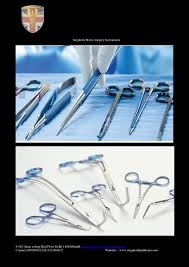The Cardiac Surgery Instruments Market segment analysis demonstrates how different product categories shape surgical efficiency and patient care. Common segments include forceps, clamps, retractors, scissors, and specialized robotic-assisted tools. Each plays a critical role in ensuring accuracy, reducing complications, and enhancing patient safety. Beyond product segmentation, the market is also divided by surgical techniques, ranging from open-heart procedures to minimally invasive and robotic surgeries. This segmentation allows healthcare providers to select instruments that align with patient needs and surgeon expertise, ultimately ensuring better outcomes.
Segmentation by end-user highlights another layer of growth drivers. Hospitals remain the largest consumers, but ambulatory surgical centers are increasingly adopting advanced cardiac instruments for minimally invasive procedures. Academic institutions and research centers also represent a growing segment, as they contribute to innovation and surgeon training. Understanding these diverse segments helps stakeholders identify profitable opportunities while ensuring that instruments meet the evolving requirements of modern cardiac care.
FAQs
Q1: What are the key product segments in this market?
A1: Forceps, clamps, retractors, scissors, and robotic-assisted tools.
Q2: How do surgical techniques influence segmentation?
A2: Open-heart, minimally invasive, and robotic surgeries require different instruments.
Q3: Who are the main end-users?
A3: Hospitals, ambulatory surgical centers, and academic research institutes.
Q4: Why is segmentation important?
A4: It helps manufacturers and providers tailor solutions to meet specific patient and clinical needs.

